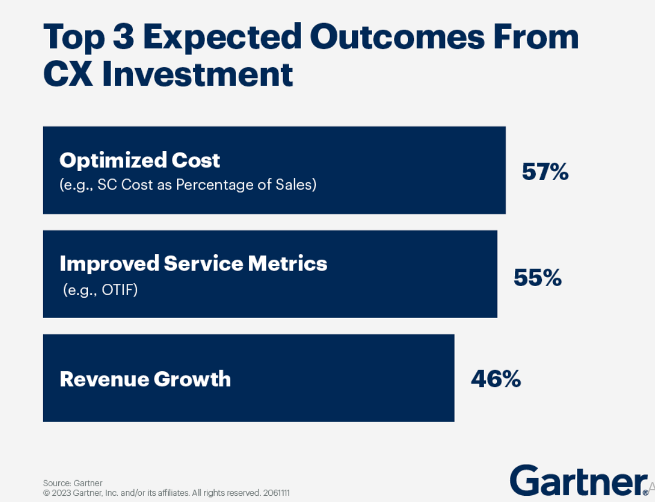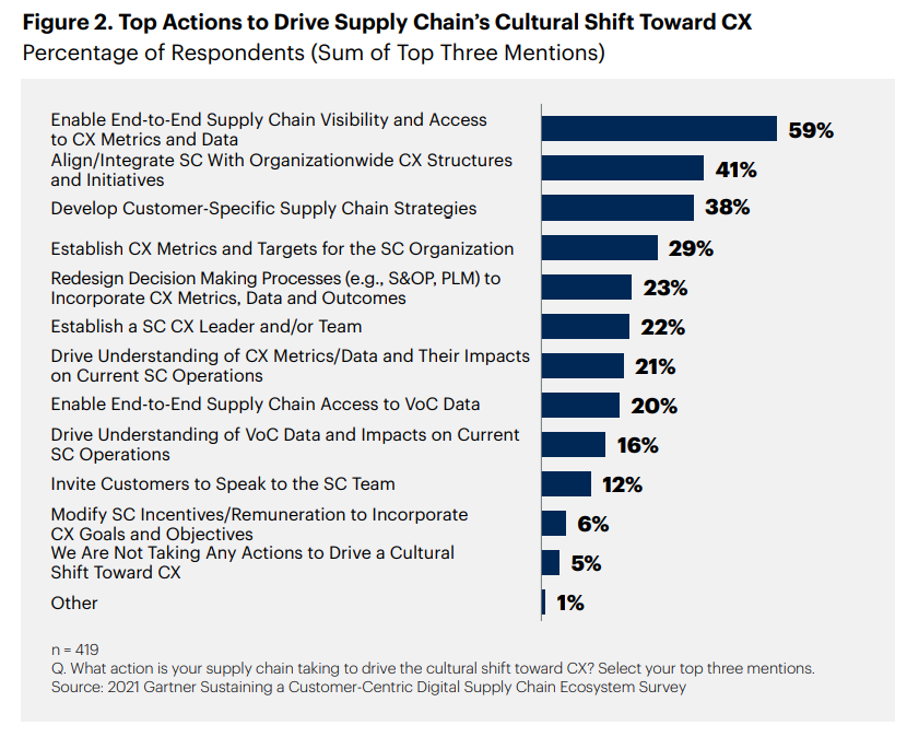Data and Analytics enabled Customer Experience in Supply Chain
3AI January 6, 2024

Featured Article:
Author: Divya Kalra, Analytics Practice Lead, Philips
Background and Context
Efficient Supply chains mean provide right product at the right time and right place. The focus of supply chains has always been operational excellence. However, the recent pandemic, chip shortages has forced the supply chains to focus on customer experience as well. The key lesson from 2020 is that customer-centric supply chains are an imperative, not a luxury. A customer-centric supply chain is focused on delivering both profit and high-value CX. A customer-centric supply chain is deeply knowledgeable of and responsive to customer needs.
According to Gartner research, enabled customers are 2x as likely to repurchase, but only 23% of supply chains focus on enabling their customers. It is time when organisation view supply chain as an enabler for enhanced customer experience and not as two different organisations.

Top needs
Supply chains can become customer centric, by quickly adapting to changing customer needs. A customer-centric supply chain should therefore focus on four characteristics:
- Resilient – Develop robust supply chain strategies that can withstand disruptions such as natural disasters, geopolitical events, and pandemics. A Dynamic transport management system can leverage predictive analytics for ETA prediction, Live route calculation etc. This could also be extended dynamic inventory movement that can predict customer impact and move inventory.
- Agile – Another example is a freight and logistics company that is creating an agile, adaptive supply chain network by leveraging its ecosystem partners and using digital tools to increase responsiveness. It has implemented robotics-enabled carts and integrated its systems with Google Glass to support pick and pack. Its automated carts follow pickers as they work, and Google Glass helps them quickly visualize what products to pick and where to place them in the warehouse (product barcodes are also scanned by Google Glass).
- Fast – E-commerce Industry: Deliver products to customers as quickly as possible by optimizing warehouse operations, using advanced logistics technologies, and establishing partnerships with efficient last-mile delivery services.
- Innovative – Pharmaceutical Industry: Integrate cutting-edge technologies such as artificial intelligence and data analytics to enhance the efficiency of drug discovery, production, and distribution, leading to innovative and more effective supply chain solutions.
Data and analytics can play a pivotal role to ensure top needs of a customer centric supply chain are met. Let’s dive deeper into the topic below.
Data and Analytics an enabler for customer centric supply chain
As per Gartner 59% respondents highlight the importance of E2E visibility in supply chain. And more than 80% place immense confidence in data to derive actionable insights at each touch point. Leveraging data and analytics in a customer-centric supply chain is crucial for understanding customer needs, optimizing operations, and enhancing overall satisfaction.

1. End to End visibility powered by central data and governance.
With data being the new currency, it is important for organisations to connect data across all supply chain touchpoints from Order to Delivery. This is the first step and descriptive approach where dashboards can be leveraged to sense and respond. Ensuring and investing in data quality is of paramount importance as this will drive adoption. Bringing together order management and delivery will not only bring productivity savings but the same data model can be leveraged to enhance customer communication. The organisation can invest on simple interface or a more sophisticated chat bot where customer can track the status of the order. The gold standard of this kind of visibility is a real-time map accessible through a mobile device.
As supply chains prioritize customer-centric approaches and gather, organize, and utilize categories of consumer data(Behavioural , interaction), they can develop a comprehensive understanding of their customers. Even at earlier stages, supply chain managers can employ data analysis to make strategic decisions regarding sourcing, distribution, or returns, thereby enhancing overall opportunities throughout the supply chain.
2. Develop customer specific supply chain strategie
One example in this case would be tailored delivery options – In this scenario, a noteworthy instance involves customized delivery choices. A supply chain that prioritizes customer satisfaction acknowledges the distinct preferences and priorities of each customer. Providing personalized delivery options aligns with these individual needs. Employ route optimization software to decrease delivery times and furnish customers with precise estimated arrival times (ETA). This not only enhances the overall customer experience but also lowers the risk of delivery delays and associated complaints.
3. Non-Sales Activities Pushed Back Up the Supply Chain
An illustrative instance of a company establishing a supply chain with a strong focus on customer satisfaction is Best Buy. The company undertook a comprehensive transformation of its supply chain to align with the needs of the contemporary era. A pivotal shift involved relocating non-sales activities further up the supply chain hierarchy, consolidating control of both goods and information flow under the supply chain manager. In the case of Best Buy, they introduced a system where the allocation of store shipments was tailored to the specific layouts of individual locations. This adjustment resulted in heightened efficiency and a reduction in the time required for the delivery of goods.
4. Enable End to End Supply Chain Access to VoC data
Implement a feedback loop where customer interactions and feedback are analyzed to identify areas for improvement in supply chain. Use data-driven insights to continuously optimize processes and enhance the overall customer experience.
5. Predict Demand with data and Improved forecasting
Last but not least – The foundation of this is the data that has been talked about in the first point. With improved better quality data organisation can predict seasonal fluctuations, trends, and variations in demand, enabling better inventory management and stock levels to meet customer expectations.
By integrating data and analytics into these aspects of the supply chain, companies can create a more customer-centric approach that responds to dynamic market conditions and individual customer needs.
References:
- https://www.gartner.com/en/supply-chain/trends/customer-centric-supply-chain
- https://www.bringg.com/blog/logistics/5-characteristics-customer-centric-supply-chain/
- https://www.blumeglobal.com/learning/customer-centric-supply-chain/
- https://www.supplychainquarterly.com/articles/4062-the-four-characteristics-of-a-customer-centric-supply-chain
Title picture: freepik.com






